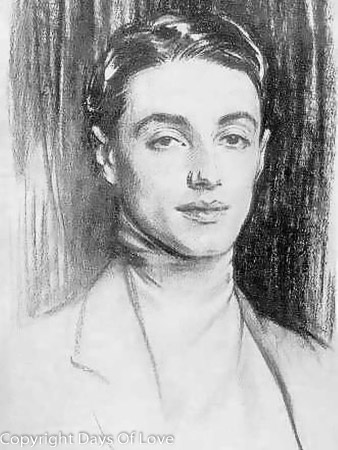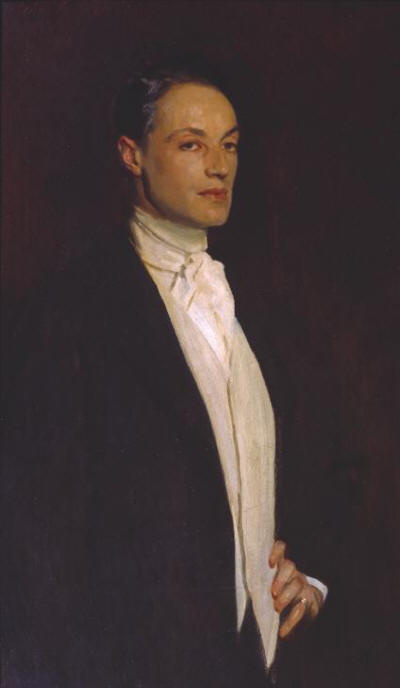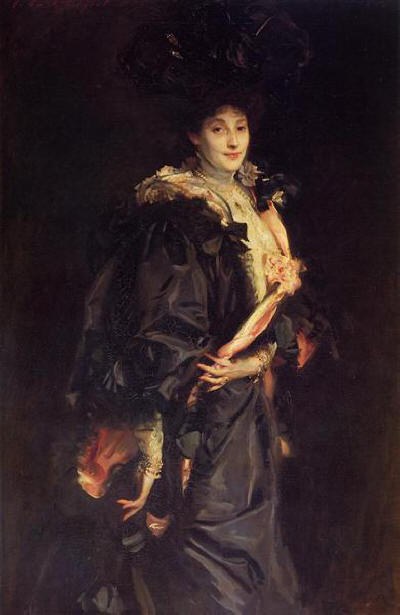

Queer Places:
13 Avenue de Marigny, 75008 Paris, Francia.
Court Royal Mansions, 1 Eastern Terrace, Brighton BN2 1DJ, UK
Sassoon
Mausoleum, 83 St George's Rd, Brighton BN2 1EF, UK
University of Oxford, Oxford, Oxfordshire OX1 3PA
Port Lympne Mansion, B2067, Lympne, Kent CT21 4PD, UK
Trent Park House, Cockfosters Rd, Enfield, Barnet EN4 0PS, UK
25 Park Ln, Mayfair, London W1K 1RA, UK
Shorncliffe Lodge, Undercliff, Sandgate, Folkestone CT20 3AT, UK
Sans Souci, Sant Savata Mali Marg, Mustafa Bazar, Byculla, Mumbai, Maharashtra 400027, India
Garden Reach, Wellesley Rd, Shivajinagar, Pune, Maharashtra 411005, India
Willesden Jewish Cemetery, Beaconsfield Rd, Willesden, London NW10 2JE, UK.
 Sir
Philip Albert Gustave David Sassoon, 3rd Baronet, GBE, CMG (4 December 1888 –
3 June 1939) was a British politician, art collector and social host,
entertaining many celebrity guests at his homes, Port Lympne Mansion, Kent,
and Trent Park, Hertfordshire, England.
Sir
Philip Albert Gustave David Sassoon, 3rd Baronet, GBE, CMG (4 December 1888 –
3 June 1939) was a British politician, art collector and social host,
entertaining many celebrity guests at his homes, Port Lympne Mansion, Kent,
and Trent Park, Hertfordshire, England.
Sassoon was a member of the prominent Jewish Sassoon family and Rothschild family. He was born in his mother's mansion on Avenue de Marigny, Paris. His father was Sir Edward Albert Sassoon, 2nd Baronet, MP, son of Albert Abdullah David Sassoon; his mother was Aline Caroline, daughter of Gustave Samuel de Rothschild. His sister was Sybil Sassoon, who married the Marquess of Cholmondeley. He was a cousin of the war poet Siegfried Sassoon. He was descended from the banking family of Frankfurt. When aged only nineteen years old his great-grandfather, James Rothschild was sent to Paris to set up the family business in France. James became wealthy. When he died in 1868 he was buried in Père Lachaise Cemetery. His branch of the Sassoon-Rothschild family kept the Jewish faith, donated to Jewish charities and founded synagogues.
His great-grandfather David Sassoon had been imprisoned in Baghdad in 1828, and in 1832 he established his business David Sassoon & Co. at Bombay. He took advantage of British rule to return to Baghdad to trade. The family eventually established a Head Office at Leadenhall Street, London and another in Manchester. The Sassoons became assimilated Jews, dressing, acting and thinking like Englishmen. The Sassoon Brothers, David and Albert were friends of the Prince of Wales, built the 'Black Horse' brand. The business came with a baronetcy of Kensington Gore. His father bought Shorncliffe Lodge, where his cousin Mayer Rothschild was the MP. His father was not a successful backbencher, but the political influences had a profound effect on young Philip.
He was educated at Farnborough Prep school, Eton before going up to Oxford. Old Etonian Arthur Balfour recommended the Debating Society to him. His father was also friendly with Frances Horner, wife of Sir John Horner, a longtime friend of Gladstone who lived at Mells Manor in Somerset. His house master was a member of the secret society of liberals, the Young Apostles. Also a near contemporary was Osbert Sitwell, the Yorkshireman and author. A French scholar, he learned the language doing classes at Windsor Castle. Sassoon was taught aesthetics by Henry Luxmoore giving an insight into philosophy and social realism. However he chose to read Modern History at Christ Church, Oxford. He was one of only 25 Jewish undergraduates, but was invited to join the Bullingdon Club. He joined the East Kent Yeomanry while still at Oxford and was commissioned as a second lieutenant.

Sir Philip Sassoon by John
Singer Sargent

Lady Sybil Sassoon, Marquise of Cholmondeley, by John
Singer Sargent
Philip Sassoon entered Parliament in 1912.[1]
Sassoon served as private secretary to Field Marshal Haig during the First World War from 1915-1918.[1] Sassoon was present at the meeting on the First of December 1914 at the Chateau Demont at Merville in France, when King George V and Edward Prince of Wales met with Poincare, President of France, and the Generals Joffre, Foch and Rawlinson. The allies showed their determination to fight Germany and the Central Powers. Because of his "numerous social and political connections" Sassoon, at that time a Second Lieutenant in the Royal East Kent Yeomanry, was in attendance. A square bronze plaque commemorating the occasion was auctioned in 2012.
He was Member of Parliament (MP) for Hythe from 1912, succeeding his father, initially as the "Baby of the House". He was Parliamentary Private Secretary to David Lloyd George in 1920. Between 1924 and 1929 and again from 1931 until 1937 he served as Under-Secretary of State for Air, and gained much prominence in political circles. He was appointed a Privy Councillor in the 1929 Dissolution Honours. In 1937 he became First Commissioner of Works, a post which he held until his death, aged fifty, two years later.
Sassoon was said to have lived an openly homosexual life.[10]
Sassoon died on 3 June 1939, aged 50, of complications from influenza.[11][12][13]
My published books: